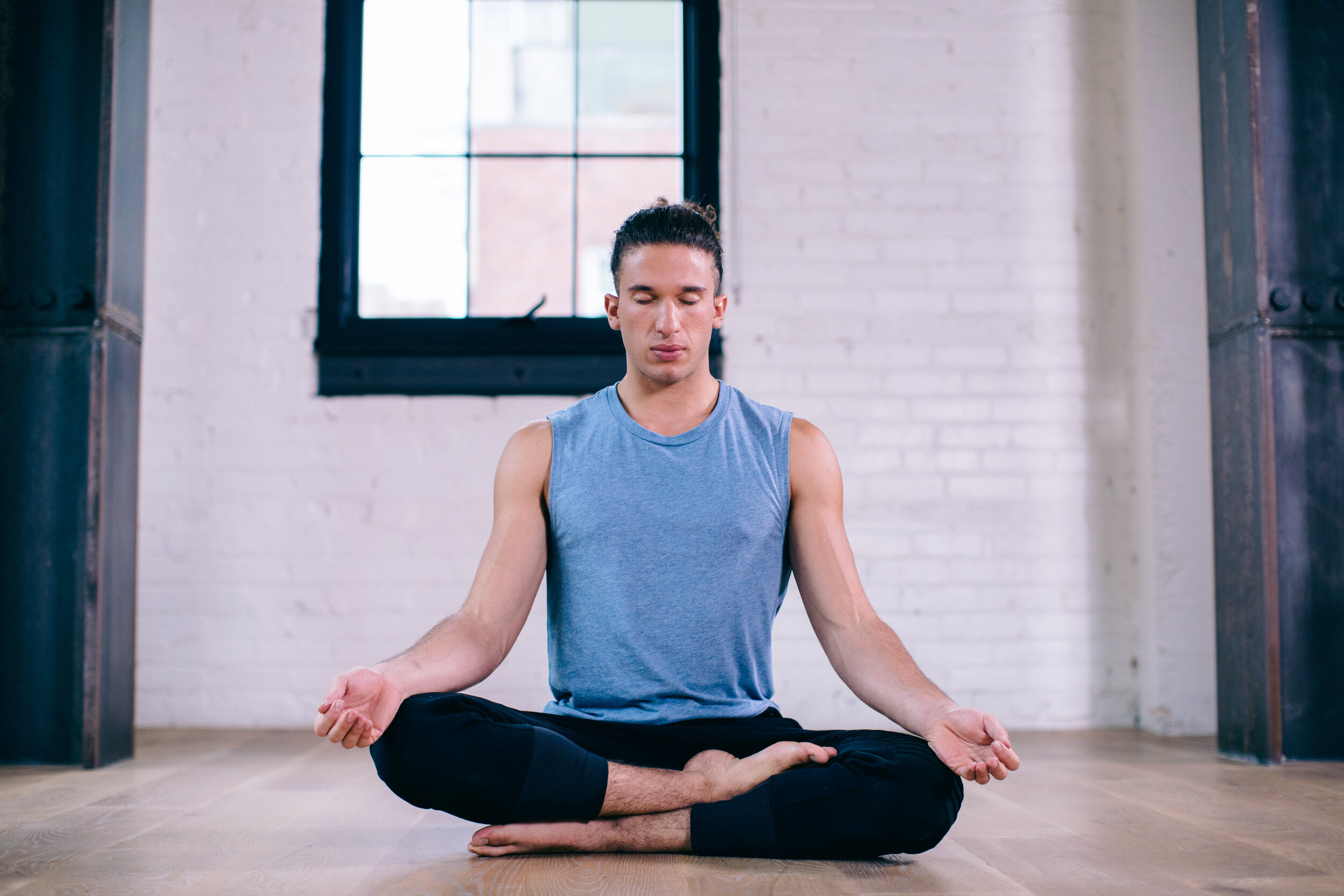What’s the Difference Between Yin Yoga and Restorative Yoga?
Yin and Restorative Yoga can seem similar: They’re both slower and more prop-heavy than many other yoga practices. And both are “yin” in the sense that they’re slower, more lunar, and more introspective, as opposed to yang, which represents heat, light, and creation.
But Yin Yoga isn’t just about yin action, but the yin structures within our bodies. The short version: In Yin Yoga, you’re slowly working more subtle tissues, while Restorative Yoga is designed for complete relaxation and recovery.
What is Yin Yoga?
Yin Yoga targets parts of our bodies that we don’t think about as often, like our ligaments, bones, and joints. While yang tissues like muscles, blood, and skin love the fast, repetitive, and challenging movements that come with a Vinyasa class, our yin tissues respond to slower, gentler holds. If you’ve taken a Yin Yoga class before, you may have heard about the 80 percent rule: You should stop at about 80 percent of your body’s capacity to be in that pose. The idea is that when we’re fully “feeling it” in our muscles, we’re starting to overstrain the fascia that benefits from this much slower practice, especially in longer holds. (This is why yoga props can be critical to the practice.)
In his book “The Complete Guide to Yin Yoga,” acclaimed Yin Yoga teacher Bernie Clark gives this simple exercise to understand your yang muscles and yin ligaments: “Place your right index finger in your left hand. Extend the finger and tighten the muscles and, with your left hand, try to bend the finger upwards. Notice that there is virtually no movement. The muscles’ job is to bind the bones together and limit the range of motion allowed in the joint.”
“Now relax the finger completely,” he continues. “Shake it out for a moment. Now, keeping the muscles passive, try to move the finger upwards. Notice the difference? The relaxed finger can move 90 degrees or more. When the muscles are relaxed, the stress is moved to the ligaments binding the joint.”
This doesn’t mean that our muscles and other yang features don’t come into play here, because our bodies are wholly connected. Our fascia surrounds both our muscles and our bones. Ligaments contain stretchier fibers, too. This is why it’s a perfect balance to bright and sunny practices like Vinyasa — and why one practice will typically enhance the other.
“Some students initially find [Yin Yoga] quite boring, passive, or soft, but they quickly discover it can be quite challenging due to the long duration of the poses,” explains Clark. “Yin Yoga is simple, but simple does not mean easy…After you have experienced this, even just once, you will realize that you have been doing only half of the asana practice.”
What Restorative Yoga does
While yang-style yoga gets your blood pumping and stretches your muscles, Yin Yoga helps reshape your tissues over time. But in your Restorative Yoga class, you shouldn’t be doing either of those things — your body should be completely passive, allowing you to rest and recover. Like Yin Yoga, Restorative Yoga makes heavy use of props, but the props are designed to cradle your body in a way that allows it to completely rest and promote healing.
Some restorative practices can be useful after an injury, but they’re also great for letting your body rest after a more active yoga class — even a Yin Yoga class. You’ve probably done a little bit of Restorative Yoga already if you’ve ever held Savasana after a class, especially if you’ve made any adjustments, like placing your legs up a wall or using a bolster under your knees, to make it more comfortable.
But it’s still about moving your body, even if you lay passive for long periods of time in each pose. Judith Lasater, a disciple of legendary yogi B.K.S. Iyengar, helped develop Restorative Yoga into what it is today. In her book “Relax and Renew: Restful Yoga for Stressful Times,” she notes that she often refers to restorative poses as “active relaxation.”
“By supporting the body with props, we alternatively stimulate and relax the body to move toward balance,” she writes. “Some poses have an overall benefit. Others target an individual part, like the lungs or heart. All create specific physiological responses that are beneficial to health and can reduce the effects of stress-related disease.”
While they’re different in terms of how they promote strength and healing, both Yin Yoga and Restorative Yoga can help promote wellness and whole-body health, especially with a regular yang practice.
Want to try Yin and Restorative Yoga? Gain access to our full library of classes for free with a 14-day trial to Alo Moves.


